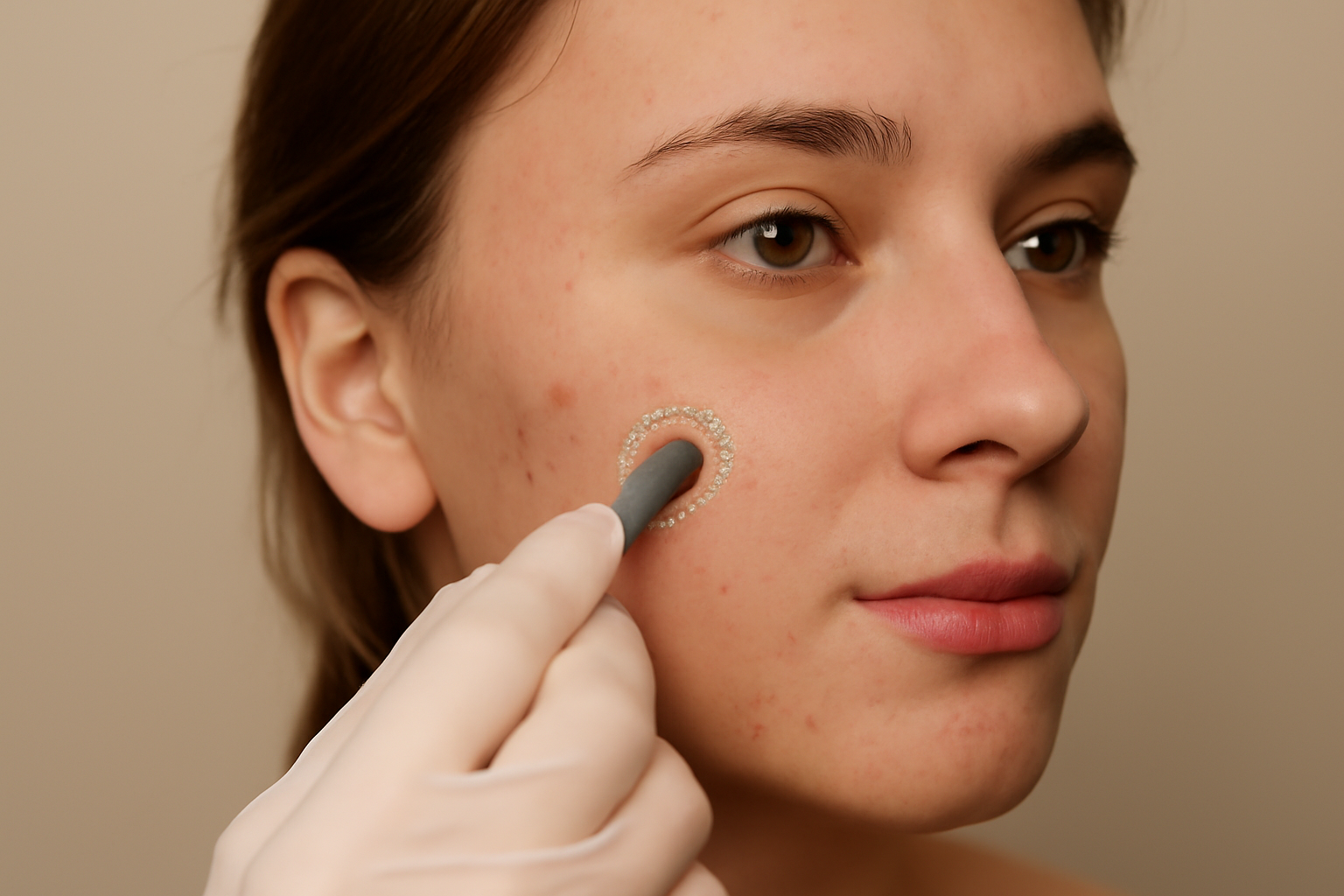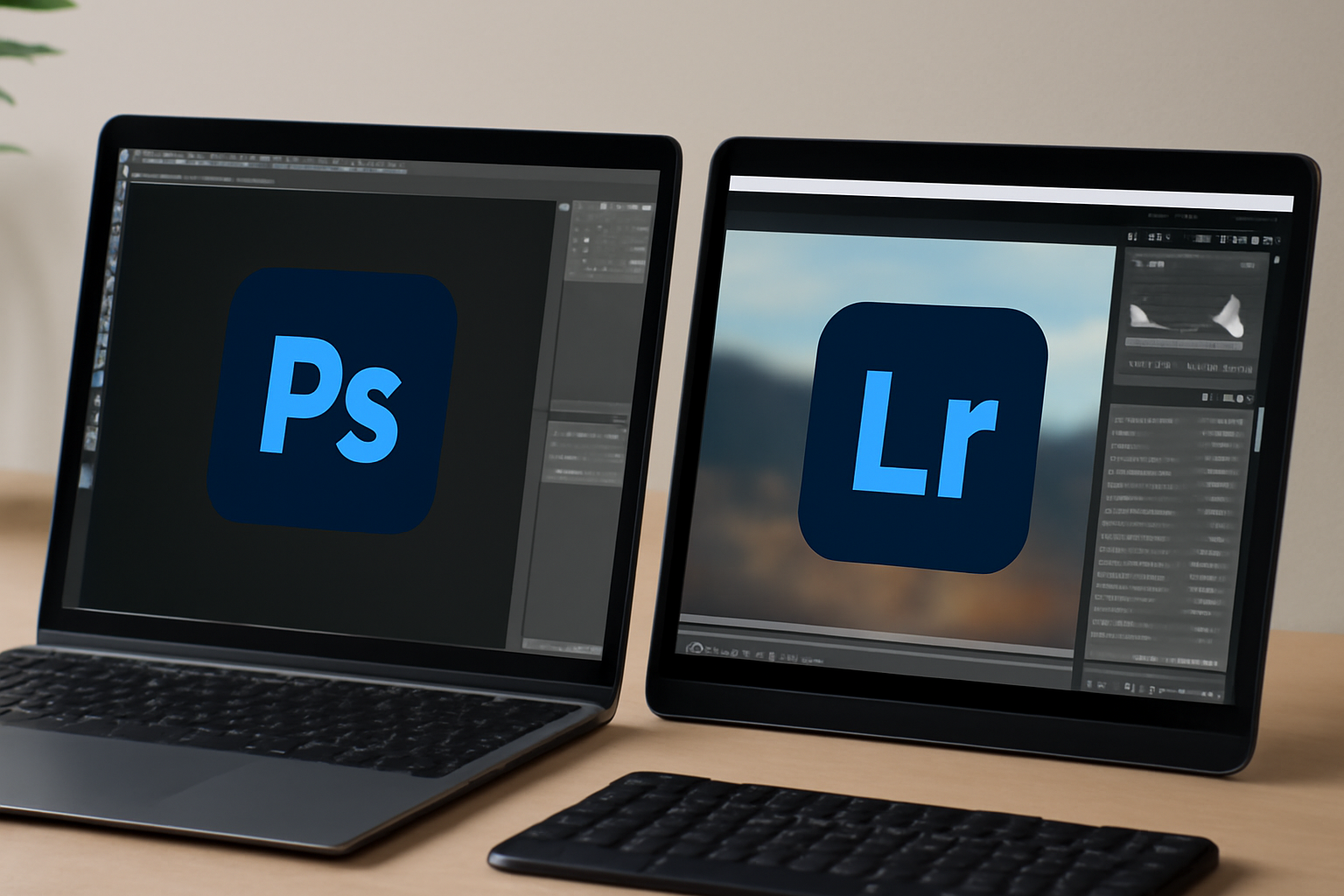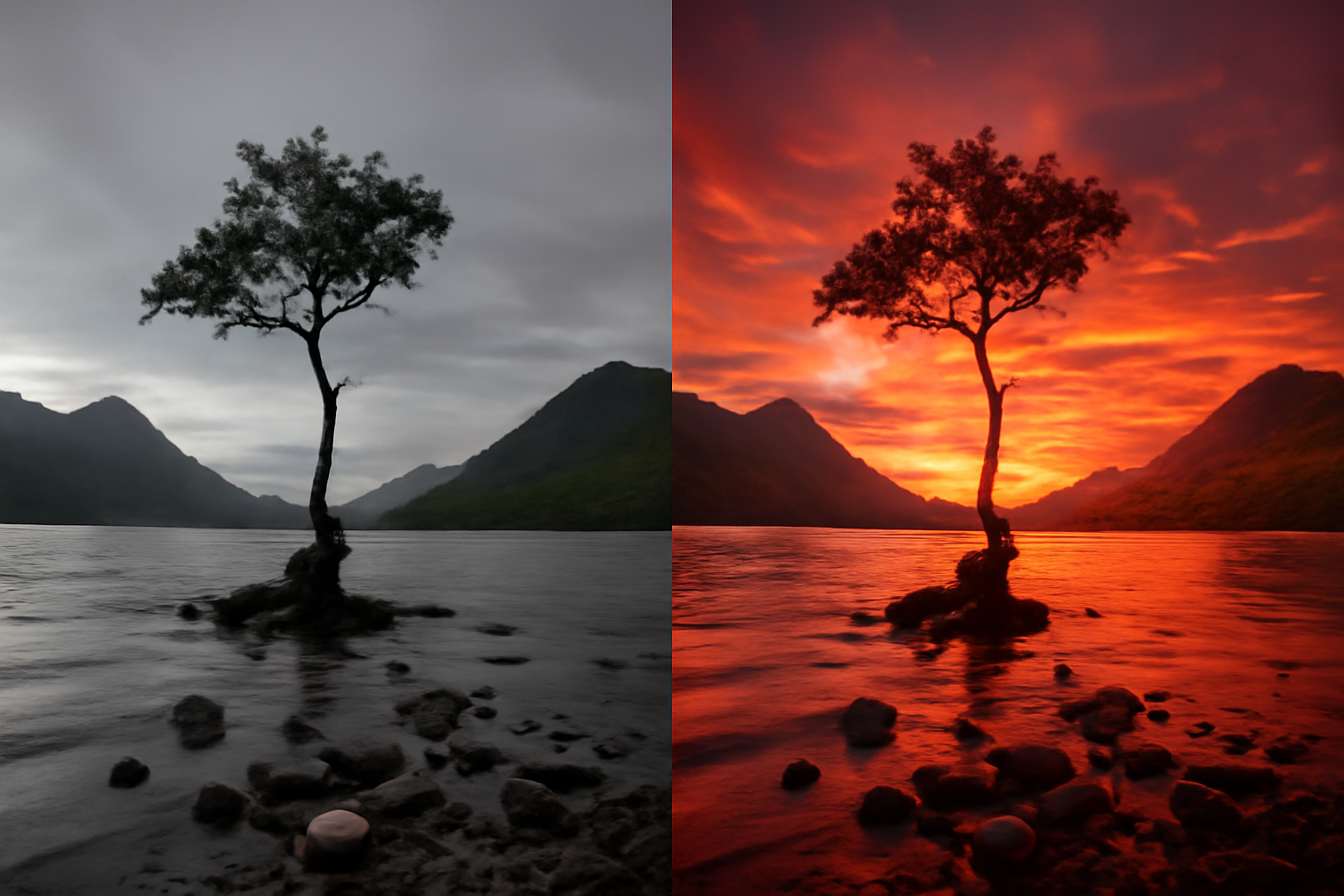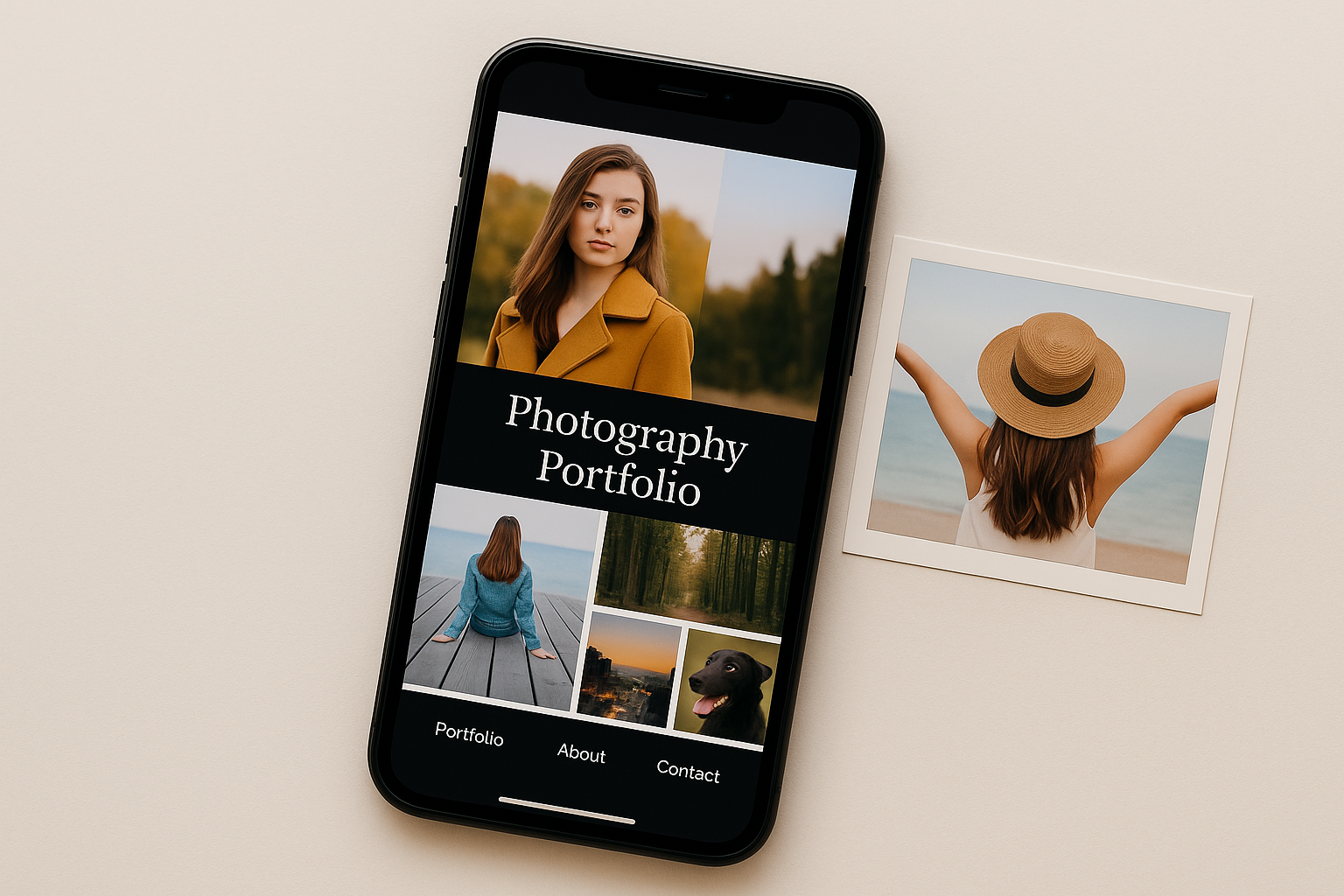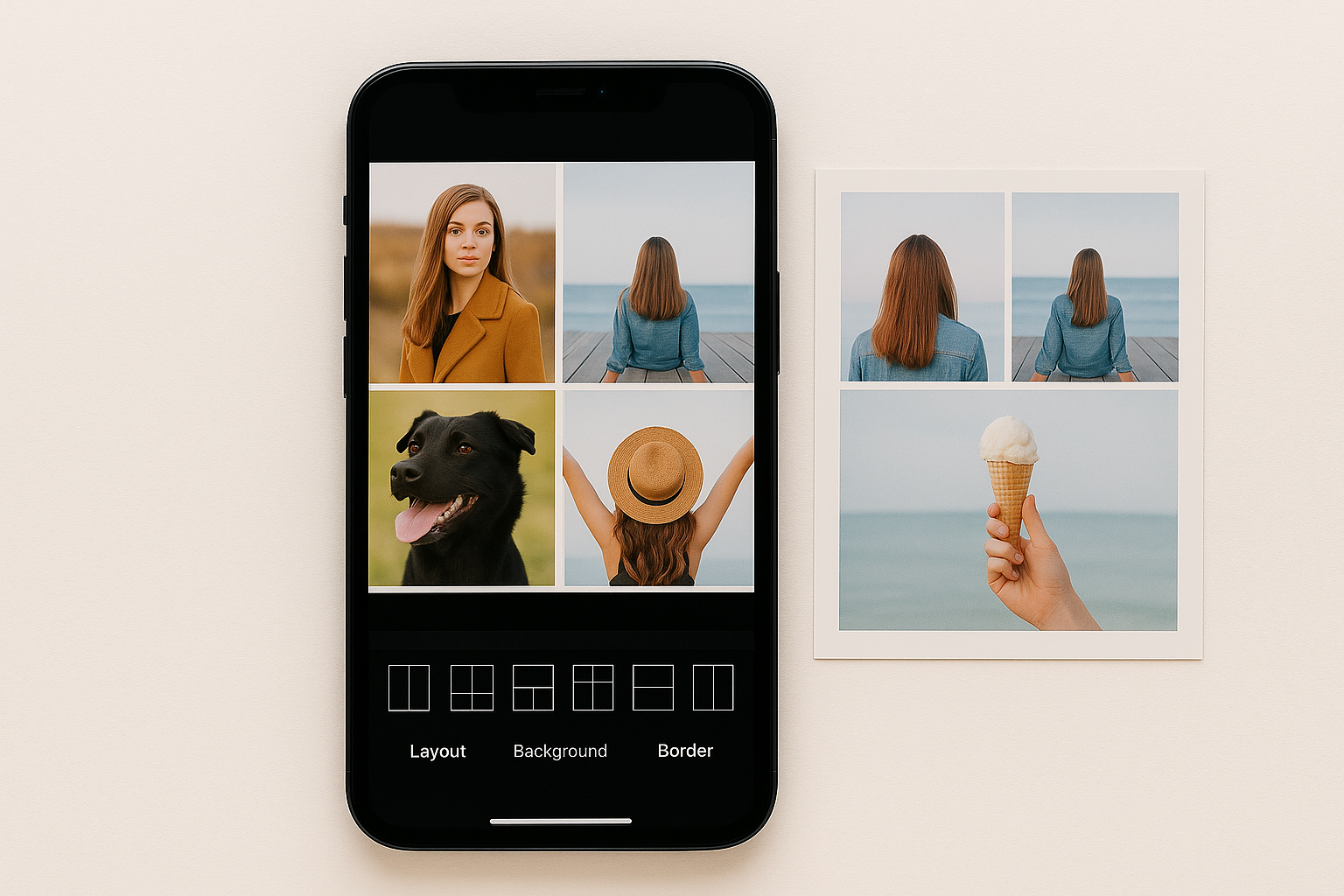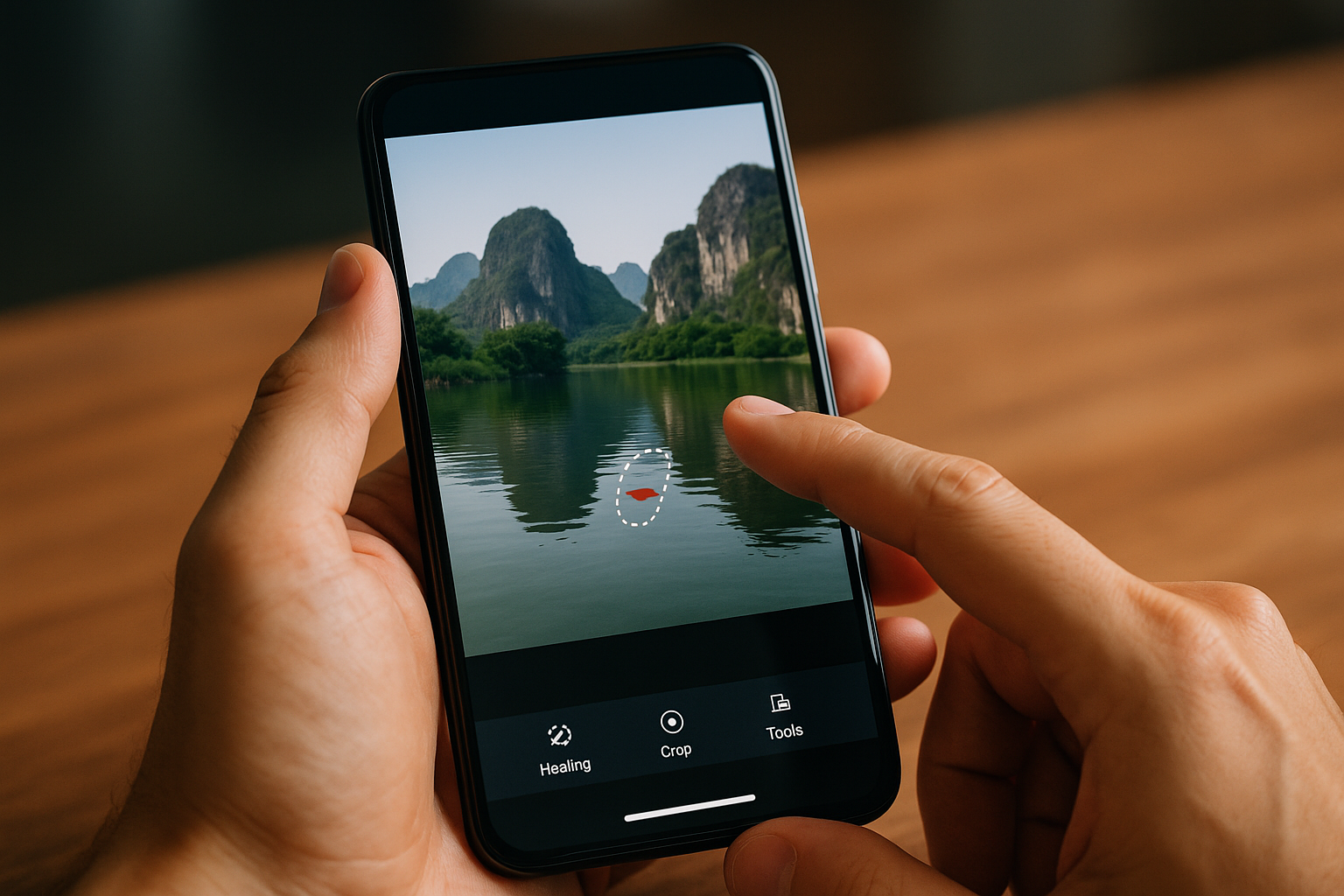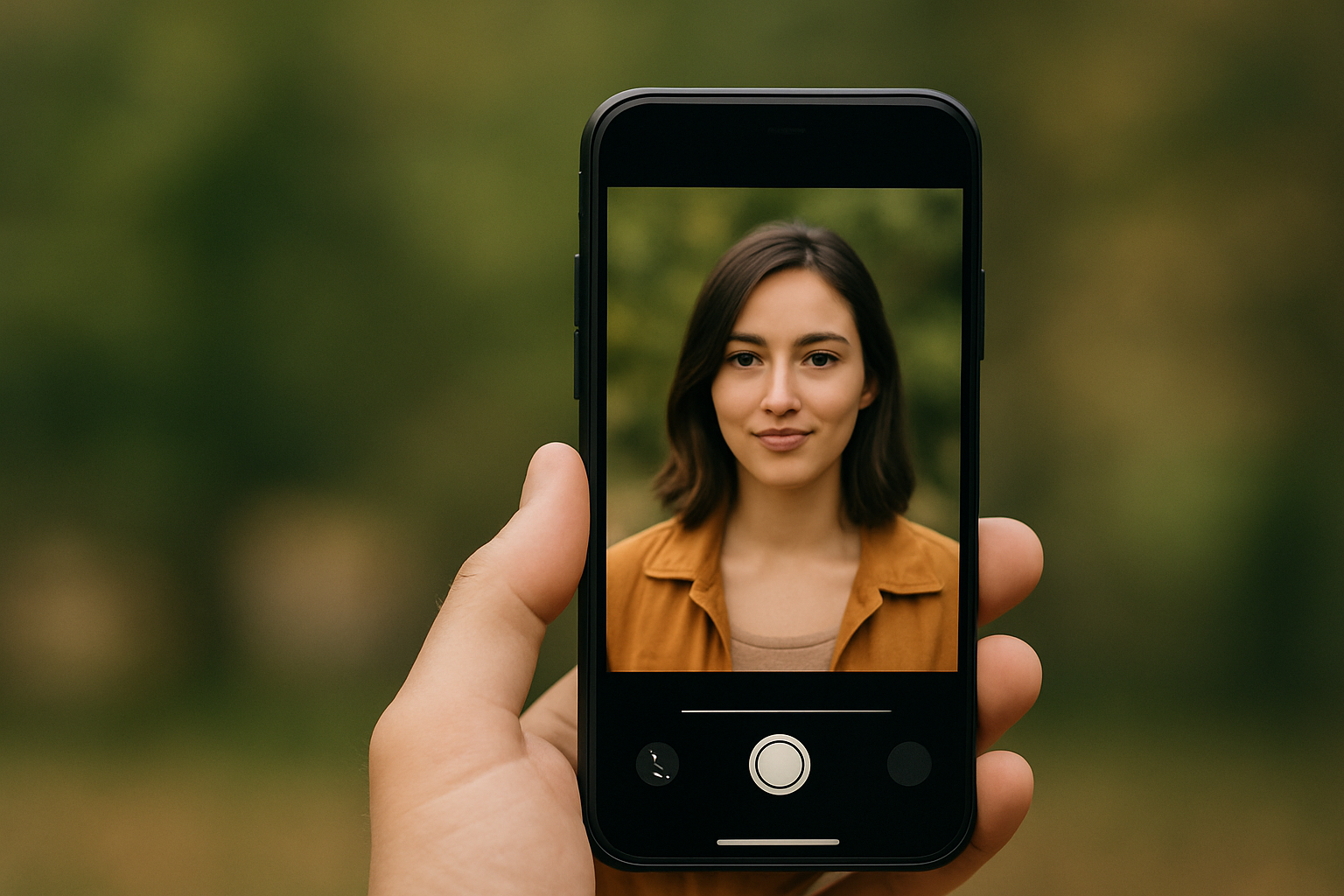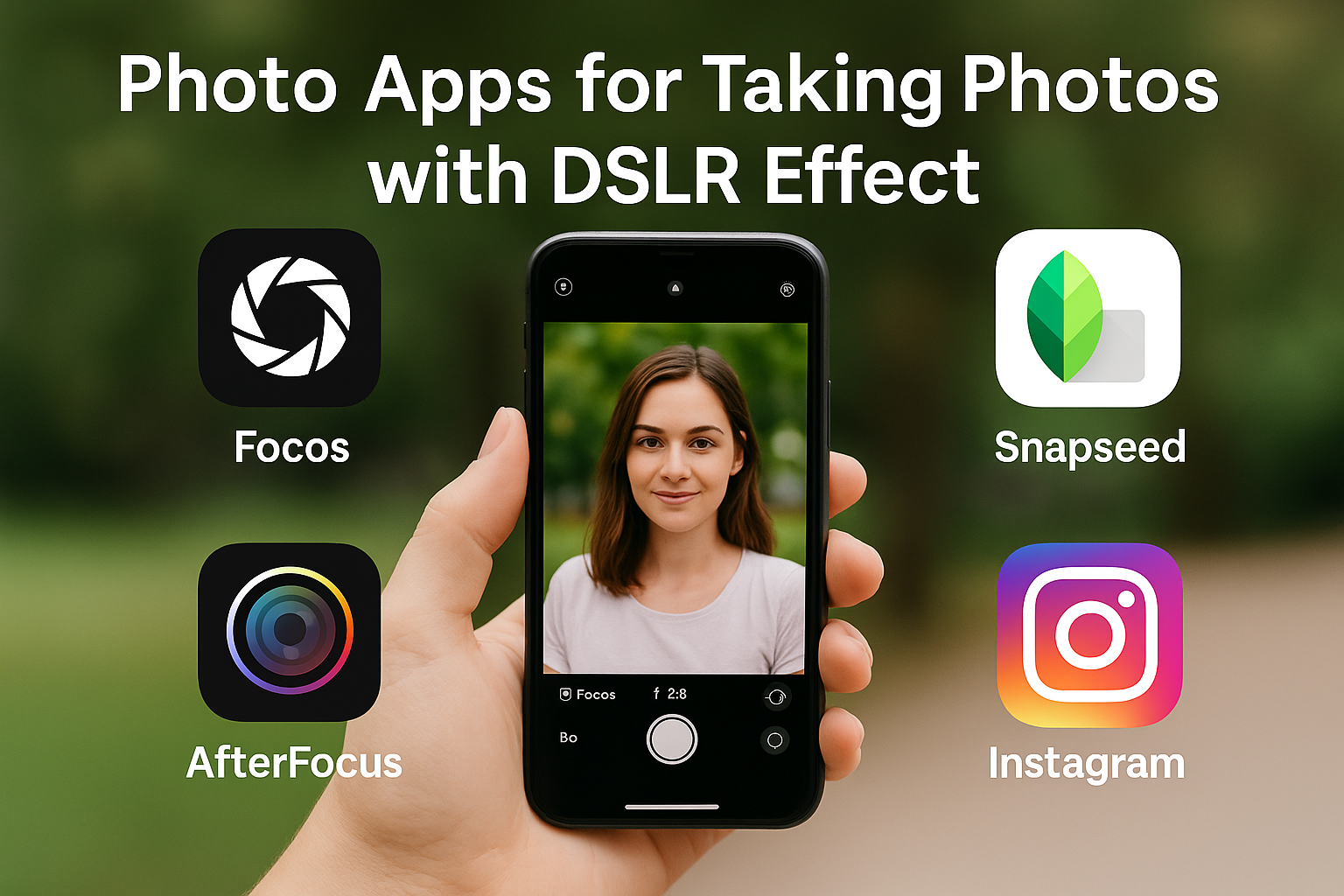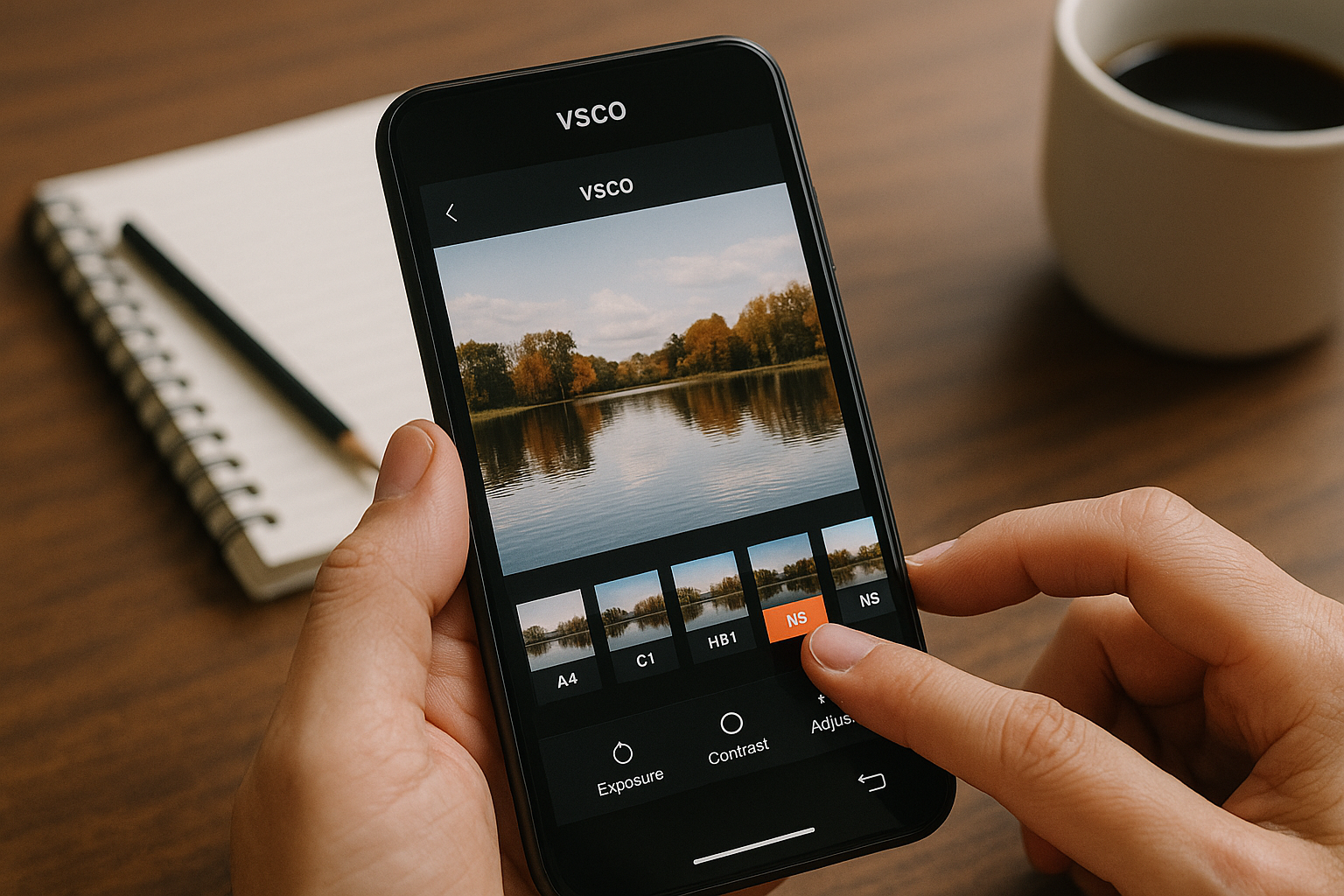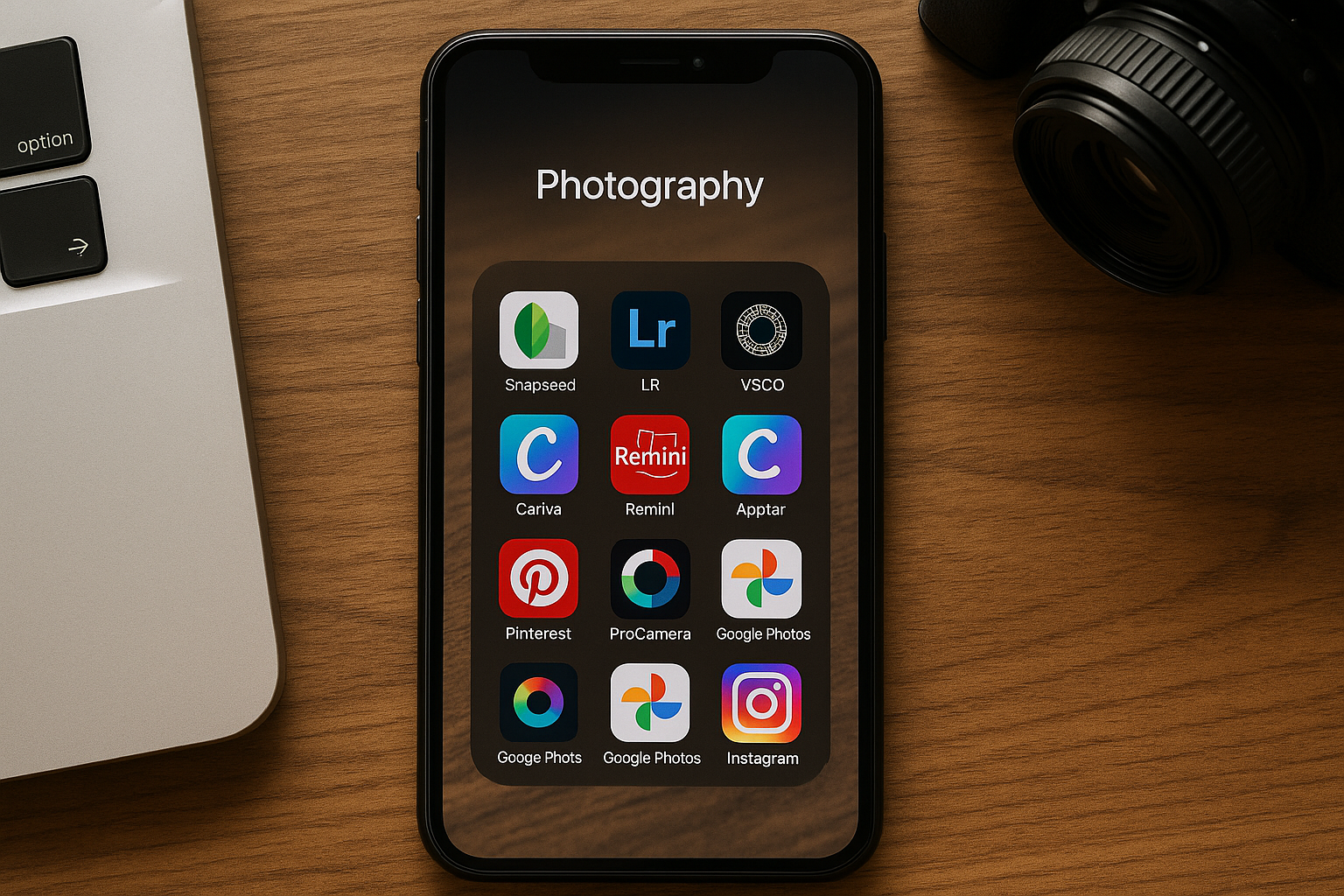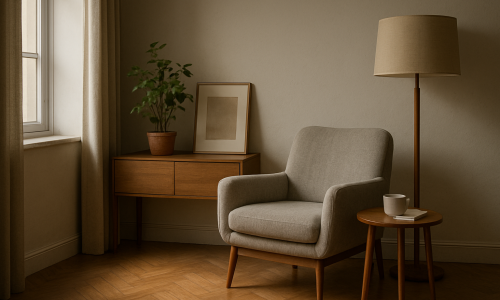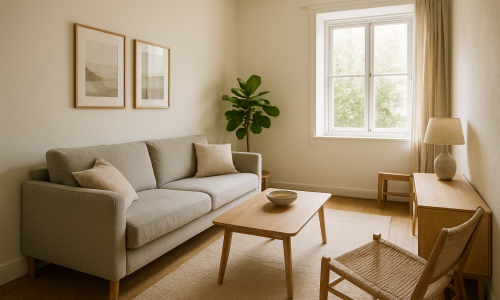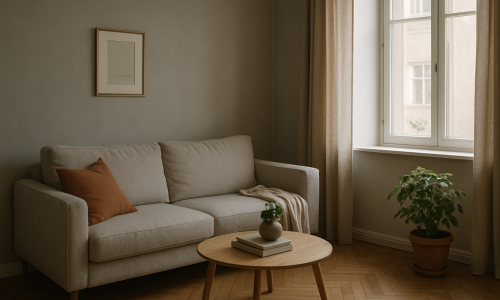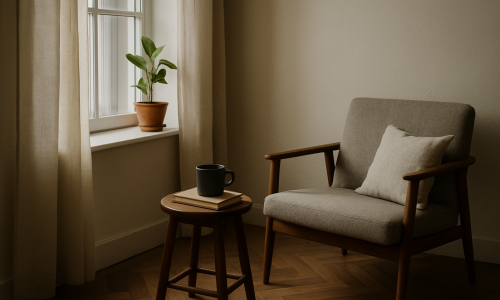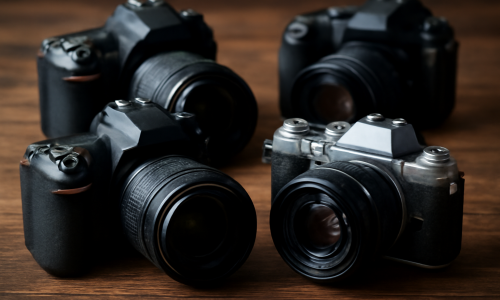One of the essential skills for any photographer editing portraits is the ability to correct skin imperfections in a natural and realistic manner. In Adobe Photoshop, there are several powerful tools that allow you to smooth, retouch, and correct the skin without losing the essential texture details. In this article, we will show you how to use these tools to enhance the appearance of the skin while maintaining a natural and professional result. 1. Preparing the Image for Editing Importing the Image Before starting the editing process, the first step is to import the image into Photoshop. Open the program, go to File > Open, and select the image you want to edit. It’s always good to work on a copy of the original image to avoid irreversible changes. Organizing Layers When editing the skin, it’s recommended to duplicate the original layer to maintain control over the adjustments made. To duplicate the layer, select it in the layer palette, right-click, and choose Duplicate Layer. This allows you to work non-destructively and revert to the original if necessary. 2. Removing Imperfections: Basic Correction Tools Using the Healing Brush Tool The Healing Brush Tool (Spot Healing Brush Tool) is one of the most effective tools for removing small skin imperfections, such as pimples, blemishes, and marks. It automatically blends the surrounding area to fill imperfections in a natural way. Step-by-Step: Tip: Use the brush with a low hardness to avoid harsh edges in the corrected areas. Using the Clone Stamp Tool The Clone Stamp Tool allows for more precise corrections by cloning a healthy area of skin and applying it to an imperfection. Step-by-Step: Tip: Use the opacity mode to adjust the intensity of the correction and make the transition smoother. 3. Smoothing the Skin: Advanced Techniques for a Natural Finish After removing imperfections, the next step is to smooth the skin’s texture. This can be done in various ways, but it’s essential to maintain the natural texture to avoid an artificial result. Using the Gaussian Blur Filter The Gaussian Blur filter is an excellent tool for smoothing skin, but it’s important to use it sparingly so that the effect doesn’t erase the essential skin texture. Step-by-Step: Using the High-Frequency Filter The High Frequency filter is an advanced technique that allows you to smooth the skin while preserving the original texture. It separates the image into two layers: a low-frequency layer (for smoothing color and tones) and a high-frequency layer (for maintaining texture details). Step-by-Step: Tip: When using the high-frequency technique, keep the blur intensity minimal to ensure the skin texture is preserved. 4. Final Adjustments: Enhancing the Skin’s Appearance Adjusting Skin Tone Sometimes, after editing, the skin tone may appear slightly off. To fix this, you can adjust the color and tone balance using the hue and saturation tools. Step-by-Step: Using the Tone Levels Mask You can add a levels adjustment layer to lighten or darken specific areas of the skin, further enhancing the appearance of the texture. Step-by-Step: 5. Finalizing: Tips for a Natural Result Avoid Overdoing It Although Photoshop offers a wide variety of powerful tools for editing, the key to well-done skin editing is to avoid overdoing it. Keep the skin texture intact and aim to highlight the subject’s natural features. Using Zoom for Detail When editing, use 100% zoom to view and adjust small imperfections with precision. This helps ensure the edit is natural and flawless. Check the Final Result After finishing, review the image at both actual size and in a reduced size to ensure that the smoothing effect looks natural and balanced. Conclusion: How to Keep Skin Edits Natural Editing skin imperfections using Photoshop can be an easy task when you have the right tools and techniques. The key is to avoid over-editing and always maintain the skin’s natural texture. With patience and practice, you’ll learn how to make subtle corrections that enhance the image without losing the important details that make each photo unique.
Photoshop vs. Lightroom: Which Photo Editing Tool is Better for You?
Choosing the right photo editing tool is essential for photographers, whether you’re a beginner or a seasoned pro. Two of the most popular options available are Adobe Photoshop and Adobe Lightroom. Each tool has its strengths, and knowing which one to choose can make a significant difference in your workflow. In this article, we’ll explore the features, pros, and cons of both tools to help you decide which one is the best fit for your photography needs. 1. What is Adobe Photoshop? An Overview of Photoshop Adobe Photoshop is a pixel-based image editing software that offers an incredibly detailed and versatile set of tools for photo manipulation and graphic design. It’s widely regarded as the industry standard for image editing, used by professionals across various fields, from photographers to designers. Key Features of Photoshop Some of the key features of Photoshop include: 2. What is Adobe Lightroom? An Overview of Lightroom Adobe Lightroom is primarily focused on non-destructive editing, allowing photographers to make adjustments to their photos without permanently altering the original image. Lightroom is perfect for photographers who need to manage large quantities of photos and make global adjustments quickly. Key Features of Lightroom Some key features of Lightroom include: 3. Photoshop vs. Lightroom: Key Differences 1. Editing Workflow One of the major differences between Photoshop and Lightroom is their approach to editing: When to Choose Photoshop for Editing When to Choose Lightroom for Editing 2. Speed and Efficiency 3. File Management 4. Price and Value 4. Which Tool is Best for You? Choosing Based on Your Needs When Photoshop is Best When Lightroom is Best 5. Conclusion: Photoshop or Lightroom? Both Photoshop and Lightroom have unique features that serve different needs in the world of photography. Photoshop excels at detailed photo manipulation and creative control, while Lightroom shines with its ease of use, speed, and batch editing features. Ultimately, the best tool depends on your photography style and needs. If you are working on large collections of photos and want an efficient editing workflow, Lightroom is the ideal choice. If your work requires heavy manipulation and pixel-perfect edits, Photoshop is the way to go.
How to Use Lightroom to Improve Your Photos: Essential Tips for Beginners
Adobe Lightroom is one of the most powerful and popular photo editing tools, widely used by both amateur and professional photographers worldwide. Its intuitive interface and powerful editing tools allow you to adjust everything from simple photo tweaks to complex transformations, all in a non-destructive way. In this article, we’ll explore how to use Lightroom efficiently to improve your photos. What is Adobe Lightroom and How Does It Work? The Role of Lightroom in Photo Editing Lightroom is not just a photo editor but also a powerful photo management tool. Unlike Photoshop, which works with pixel-level edits, Lightroom is optimized for quick global adjustments. It allows you to tweak exposure, colors, contrast, sharpness, and more without altering the original quality of the image. Organization and Workflow Before editing your photos, you need to import them into Lightroom. The program offers a library where you can organize, tag, and rate your photos. This is especially useful for photographers who work with large volumes of images, such as those shooting weddings or photo sessions. Lightroom allows you to manage everything in one place. Basic Adjustments in Lightroom: First Steps 1. Adjusting Exposure Exposure is the first adjustment you should make. When a photo is too dark (underexposed) or too bright (overexposed), the image quality can be compromised. In Lightroom, the exposure slider is simple to use—just move it until the image is balanced. Tip: While adjusting exposure, pay attention to the highlight and shadow areas to avoid losing important details. 2. Contrast: Enhancing Details Contrast is the difference between the light and dark areas of your photo. Proper contrast can add depth to an image. The contrast slider in Lightroom allows you to increase or decrease the difference between these areas. Tip: If you want more contrast, move the slider to the right, but if the image becomes too harsh, tone it down a bit to soften the effect. 3. Adjusting Highlights and Shadows Lightroom offers highlight and shadow sliders for fine-tuning your exposure. You can lighten dark areas (shadows) without affecting the overall brightness of the image or, if necessary, darken bright areas. Tip: Use the shadow control to recover details in dark areas and the highlight control to avoid bright areas from being blown out. Improving Colors in Lightroom 1. White Balance Adjustment The white balance adjusts the overall color tone of the image, giving it a warmer or cooler feel. The temperature slider in Lightroom can be adjusted easily by moving the slider left (cooler) or right (warmer). Tip: For a cozy, warm look, move the temperature to the warmer side. For cooler, calmer tones, move it towards the cooler side. 2. Saturation and Vibrance Saturation controls the intensity of all colors in the image, while vibrance adjusts the more muted colors without affecting the already saturated ones. These two controls allow you to make precise adjustments. Tip: Increase the vibrance for a livelier look without overdoing it, while saturation can be used to intensify or soften colors entirely. 3. HSL/Color: Advanced Color Control The HSL/Color panel in Lightroom allows for detailed control over the hue, saturation, and luminance of each individual color. This is useful for more specific adjustments, such as intensifying the green of plants or softening the blue of the sky. Tip: Experiment with reducing the saturation of reds or oranges in portraits for more natural-looking skin tones. Using Lightroom’s Image Correction Tools 1. Lens Correction Lightroom has a lens correction tool that automatically adjusts distortions caused by the lens used, such as vignetting (darkening of the edges) and barrel distortion. Tip: Whenever possible, enable the automatic lens correction, especially when shooting with wide-angle lenses. 2. Removing Imperfections While Lightroom isn’t as powerful as Photoshop for detailed retouching, it does have a spot removal tool that is useful for fixing small imperfections, like dust on your lens or blemishes on the skin. Tip: Use the adjustment brush tool to remove small blemishes or enhance specific areas of the photo. 3. Adding a Vignette A subtle vignette can help highlight the main subject of the photo by darkening the edges, drawing attention to the center. Use this tool in moderation to avoid overdoing the effect. Tip: Adjust the vignette style to not affect the overall balance of the image, focusing on the main subject. Exporting Your Photos in Lightroom 1. Export Settings Once your editing is complete, you can export your photos from Lightroom to various platforms. Export settings include choosing the file format (JPEG, TIFF, PNG), resolution, and quality. Tip: For social media, use a resolution of 72 dpi and adjust the quality to a level that maintains a good balance between quality and file size. 2. Export Presets If you frequently make similar edits, Lightroom allows you to save export presets. This saves time, as you can apply your favorite export settings automatically. Conclusion: The Magic of Lightroom in Photo Editing Lightroom offers a series of powerful and intuitive tools for photographers of all levels. From simple adjustments like exposure and contrast to more advanced edits like color grading and lens correction, Lightroom is essential for photographers who want to improve their images quickly and effectively. As you continue to explore all of Lightroom’s features, you’ll begin to develop your own editing style and transform your photos from good to extraordinary. Don’t be afraid to experiment, and remember that practice is key to mastering photo editing.
Apps to Create Photography Portfolios on Your Phone
Having a well-organized portfolio is essential for any photographer — whether amateur or professional. A portfolio not only showcases your work with quality but also helps you attract clients, build credibility, and keep your best images in one place. The good news is that today, you can create impressive portfolios directly from your phone, using apps that offer modern design, easy organization, and even online sharing options. In this article, you’ll discover the best apps to create photography portfolios on your smartphone and learn how to use them strategically. 1. Why have a photography portfolio? A portfolio is more than just a gallery of photos — it’s your professional showcase. With it, you can: And the best part: with the right apps, you can create everything without a computer. 2. Best Apps to Create Portfolios on Your Phone 📱 1. Adobe Portfolio 📌 Requires a paid Adobe plan. 📱 2. Canva Perfect for full visual control without complications. 📱 3. Pixieset 📌 Free version available with storage limits; paid plans also offered. 📱 4. Behance Great for photographers who want to showcase their work globally. 📱 5. Google Sites Lightweight, easy-to-use option for anyone who wants something straightforward. 3. What to Include in Your Portfolio Regardless of which app you choose, be sure to organize your content effectively: ✅ Choose your best photos Quality over quantity. Show variety, but keep a consistent style. ✅ Categorize your work Portraits, events, landscapes, products — organize clearly. ✅ Add photo details Date, location, project type, camera used, creative concept — these add context and value. ✅ Include your contact info Links to WhatsApp, social media, or email are essential. ✅ Keep it updated Always refresh your portfolio with new, relevant work. 4. Extra Tips to Impress Conclusion: Your Portfolio in the Palm of Your Hand With the right apps, you can build a photography portfolio that’s modern, elegant, and functional — without a computer or technical skills. Whether you want to impress clients, showcase your talent, or simply organize your work with care, apps like Canva, Pixieset, Behance, and Adobe Portfolio make the process easier and highlight your value as a photographer. The world will judge your photos by how they’re presented.Take care of the window that shows who you are as an artist.
Apps to Make Collages with Your Photos
Photo collages are a creative, fun, and visually appealing way to tell stories, highlight special moments, or create content for social media, albums, invitations, and more. The best part? You don’t need any graphic design skills or complex software to make a great-looking collage. With the right apps, you can do everything directly from your smartphone in just a few taps. In this article, you’ll discover the best apps to make photo collages, learn about their key features, and get tips to create eye-catching layouts easily. 1. Why use photo collages? Collages are great for: And best of all: you can do it all in style and high quality, even without design experience. 2. Best Apps to Make Photo Collages 📱 1. Canva One of the most complete apps for collages and graphic design in general. Ideal for anyone looking for convenience, customization, and a professional look. 📱 2. PicsArt A popular app for its variety of creative tools. Great for users who love creativity and unique layouts. 📱 3. PhotoGrid As the name suggests, it specializes in grid-based collages. Perfect for quick and visually engaging collages. 📱 4. Layout from Instagram Instagram’s official app for making simple collages. Ideal for creating collages for Stories or feed posts. 📱 5. Fotor A photo editing app that also offers a great collage maker. Great for users seeking elegant and minimalistic collage designs. 3. Tips to Make Creative Photo Collages ✅ Choose photos that go together Use images with similar tones, themes, or from the same event to keep visual harmony. ✅ Keep visual balance Avoid overcrowding the layout. Less is more. ✅ Try different layouts Don’t stick only to grid formats — explore freestyle and unique compositions. ✅ Add meaningful text Short phrases, dates, or titles help add context and meaning. ✅ Use frames and backgrounds carefully They can enhance your collage, but shouldn’t overpower the photos. 4. When to Use Photo Collages Collages are perfect for: Conclusion: Tell Visual Stories with Creativity Creating photo collages is an accessible, practical, and powerful way to communicate memories, ideas, and emotions through images. With apps like Canva, PicsArt, PhotoGrid, and others, you can turn ordinary photos into beautiful, eye-catching compositions — no design skills needed. Experiment with different styles, explore your creativity, and share your collages with the world — all from your phone.
Apps to Remove Unwanted Objects from Your Photos
Have you ever taken a great photo, only to notice later that there’s a pole, a stranger, or an unwanted detail in the background? Fortunately, you no longer need to retake the photo or know how to use Photoshop to fix it. Today, there are many mobile apps that let you remove unwanted objects with just a few taps — right from your phone. In this article, you’ll discover the best apps for removing elements from photos, how to use them effectively, and tips to achieve a clean, professional result. 1. Why remove objects from photos? Removing unwanted objects or distractions helps to: With the right tool, this can be done in seconds, even by beginners. 2. Best apps to remove unwanted objects from photos 📱 1. Snapseed (Tool: Healing) 📌 Tip: Zoom in and apply slowly to avoid visible distortions. 📱 2. Adobe Photoshop Express One of the most reliable apps for erasing details while maintaining image quality. 📱 3. Remove Unwanted Object (Android) Simple but surprisingly powerful. 📱 4. TouchRetouch Available for both iOS and Android. It’s a paid app, but highly praised by photographers. 📱 5. PhotoRoom Excellent for e-commerce and online store images. 3. Tips for removing objects naturally Even with good apps, these practical tips will help you get cleaner and more professional-looking results: ✅ Zoom in Zooming allows for more precise selections. ✅ Remove in small sections If the object is large, erase it piece by piece. ✅ Match surrounding texture Some apps let you clone surrounding areas for a more seamless result. ✅ Combine with other edits After object removal, adjust light and color to help unify the image. 4. When not to remove objects Even though it’s tempting, it’s important not to overdo it: The goal is to enhance the image, not make it look artificial. Conclusion: fewer distractions, more impact Removing unwanted objects is a powerful editing technique for anyone who wants cleaner, more professional and visually pleasing photos. And the best part: you don’t need to master complex software to do it. With apps like Snapseed, TouchRetouch, or Photoshop Express, anyone can edit their photos easily and get stunning results — all from a mobile device.
How to Blur the Background of Photos Using Apps
Blurring the background of a photo is one of the simplest and most effective ways to give your images a professional look. This effect helps highlight the main subject, reduces distractions in the background, and adds depth to your composition — all without needing a professional camera. The good news is that there are several free and easy-to-use apps that simulate the blur (bokeh) effect right on your phone. In this article, you’ll learn how to apply this effect using the best apps and get tips for making it look natural and polished. 1. What is the blur effect? Also known as the bokeh effect, this soft background blur is commonly seen in DSLR camera photos. It helps isolate the subject from the background, creating a cleaner, more artistic, and elegant look. Today, anyone can apply this effect with just a tap, using artificial intelligence, auto-select tools, or manual adjustments — all through mobile editing apps. 2. Best apps to blur the background of photos 📱 1. Snapseed Tool: Lens Blur 📌 Tip: Use the effect for portraits or close-up subjects to enhance depth. 📱 2. AfterFocus Great for portraits, product shots, and scenic photos. 📱 3. Lightroom Mobile (Blur Masking) In the premium version, you can use subject selection or manual masking tools: Perfect for users with some editing experience looking for professional results. 📱 4. PicsArt A popular choice for fast and stylized edits. 📱 5. AirBrush Perfect for casual users who want to quickly enhance personal photos. 3. How to apply the blur effect naturally Even with powerful apps, the way you apply the blur makes a big difference. Here are some practical tips: ✅ Don’t overdo it Too much blur can make the photo look fake. Keep it soft and gradual. ✅ Use well-lit photos Good lighting helps emphasize the subject and makes the blur look more natural. ✅ Combine with color adjustments Blurring the background along with adjusting contrast and saturation helps direct the viewer’s attention. ✅ Experiment with focal points In some apps, you can manually reposition the focus. Try placing it off-center for more interesting compositions. 4. When is it worth blurring the background? Blurring the background can be helpful in many situations: 5. Comparing photos with and without blur See how the blur effect can completely change the feel of a photo: Type of Photo Without Blur With Blur Portrait Background distracts Face stands out clearly Product Competes with background Product is the focus Selfie Cluttered scene Clean and polished Urban landscape Visual noise Depth and elegance Conclusion: Enhance Your Photos with a Touch of Focus Blurring the background is a simple but powerful editing technique. With the right apps and some creative control, you can create more elegant, professional, and visually impactful images — right from your smartphone. Start with Snapseed or AfterFocus and gradually explore other tools until you find the style that best represents your photography.
Apps to Take Photos with a DSLR Effect on Your Phone
One of the most iconic features of DSLR cameras is the background blur, also known as the bokeh effect, which highlights the subject and creates a professional, artistic look. The good news is, you no longer need an expensive camera to achieve this result. Thanks to technology, it’s now possible to simulate the DSLR effect right on your smartphone using specific apps. In this article, you’ll discover the best apps to take DSLR-style photos with your phone, how to use them, and tips to get a natural and beautiful blur. 1. What is the DSLR effect? DSLR stands for Digital Single-Lens Reflex, a type of camera that uses large sensors and interchangeable lenses. This allows it to capture images with controlled depth of field. The blurred background effect, which clearly separates the subject from the background, is highly valued in portraits, product photography, and even everyday snapshots. This effect gives photos a professional and focused look. 2. How to simulate the DSLR effect on your phone There are two main ways to achieve this effect: Let’s take a look at the best apps available! 3. Best Apps to Take Photos with DSLR Effect 📱 1. Focos One of the most advanced apps to simulate depth of field. Available for iOS and Android. 📱 2. Snapseed Although not specifically for DSLR effects, Snapseed has a powerful Lens Blur tool: It’s free and packed with other professional-grade editing features. 📱 3. AfterFocus A dedicated app designed specifically for creating depth of field. Great choice for users who want detailed control over the result. 📱 4. Lightroom Mobile (Pro Mode) For more advanced users, Lightroom Mobile offers selective blur capabilities: While not automatic, Lightroom enables high-level custom edits when used properly. 📱 5. Instagram (Focus mode in Stories) Yes — even Instagram offers a way to create this effect: While it doesn’t replace a dedicated app, it’s handy for casual use. 4. Tips to Improve the DSLR Effect on Your Phone Even with good apps, some tricks will help enhance the result: ✅ Use textured backgrounds Leaves, distant lights, or decorative elements can help create a more attractive bokeh. ✅ Create distance between subject and background The more space between them, the more natural the blur will look. ✅ Light the subject well Good lighting improves the contrast between subject and background. ✅ Use the rear camera It usually offers better quality and depth simulation than the front camera. ✅ Keep your phone stable Use both hands or a tripod to avoid blurring the focused area. 5. When to Use the DSLR Effect This type of blur is ideal for: 6. Conclusion: Professional Quality in Your Pocket The DSLR effect is no longer exclusive to professional cameras. With the right apps and a few smart techniques, you can easily take beautiful, realistic, and stylish blurred-background photos right from your smartphone. Whether you’re posting on Instagram, building a portfolio, or just capturing memories in a more polished way, these tools will take your mobile photography to the next level.
How to Use VSCO to Transform Your Photos
If you’re looking for photo editing with a professional look and an artistic touch, VSCO is one of the most creative and complete apps you can have on your phone. More than just applying filters, the app allows you to create a consistent visual identity with smooth edits inspired by analog film and simple, intuitive tools. In this article, you’ll learn how to use VSCO step by step to transform your photos, from importing the image to exporting the final result — plus tips to make your edits even more impactful. 1. What is VSCO? VSCO (Visual Supply Company) is a photo and video editing app available for Android and iOS. It’s famous for its retro, cinematic filters, widely used by content creators, amateur photographers, and users who want a more harmonious social media feed. It also functions as a visual social network, where you can share your photos and explore the work of other users — without likes or comments. The focus is entirely on visual art. 2. Getting Started with VSCO a) Download and install the app You can find VSCO on the Google Play Store and App Store. It’s free to use, with many tools available, but there’s also a paid version with premium filters and advanced features. b) Create an account Sign up using your email, phone number, or Google/Apple account. You’ll need an account to save edits and access the community. c) Import a photo Once inside the app, tap the “+” symbol to import a photo from your gallery. You can also select multiple images to edit in sequence. 3. Applying Filters in VSCO Filters are what make VSCO stand out. They simulate analog film styles with soft tones and elegant textures. 📌 Tip: Don’t overdo it — the beauty of VSCO is in its subtlety. 4. Using VSCO’s Editing Tools After applying a filter, you can refine your image using the app’s editing tools. Key features include: All tools use simple sliders, making customization quick and intuitive. 5. Creating a Visual Identity If you post regularly, whether on Instagram or an online portfolio, building a consistent style is key. VSCO makes this easier: 📌 Example: A travel account might use warm filters and soft grain to create a cozy, nostalgic vibe. 6. Exporting and Sharing Your Photos After finishing your edit, tap “Save” to export the image to your phone’s gallery. VSCO preserves high quality, making it great for professional use or printing. You can also: 7. VSCO X: Is the Paid Version Worth It? VSCO’s premium version, called VSCO X, offers: If you edit often and want refined, creative results, the subscription can be worth it. For casual users, the free version is already excellent. 8. Extra Tips to Get the Most from VSCO Turn Your Photos into Art with a Simple Touch VSCO is more than just a filter app — it’s a creative tool that lets you turn your photos into soft, stylish, and unique compositions. With practice and attention to detail, you can create a striking visual portfolio, worthy of a professional — all from your phone.
Must-Have Apps for Every Photography Lover
If you love photography — whether as a hobby, a profession, or simply as a way to capture beautiful moments — you need more than just your phone’s camera. Today, there’s a vast array of apps that can transform an ordinary photo into something truly impressive. In this article, you’ll discover the essential apps every photography enthusiast should have on their smartphone. These tools cover editing, organization, composition, inspiration, and even learning. 1. Snapseed – Powerful and Free Editing One of the most recommended apps by both beginners and experienced photographers. Snapseed, developed by Google, is free and offers: With an intuitive interface, it’s perfect for those who want high-quality editing without complications. 2. Adobe Lightroom Mobile – Professional Control in Your Pocket If you’re looking for precise edits with a professional finish, Lightroom Mobile is essential. Even in its free version, it provides: Perfect for amateur and professional photographers who want polished, refined edits. 3. VSCO – Artistic Filters and Visual Identity A favorite among content creators and users seeking a unique aesthetic, VSCO combines editing features with a photography-centered social network. Great for building a distinct visual identity, especially on social media. 4. Canva – Creative Design and Photo Editing Though Canva is widely known for design, it’s also a great tool for photo editing and creating visuals for social media. A true all-in-one app for anyone who works with images, content, or digital marketing. 5. Remini – Restoration and Enhancement with AI Remini uses artificial intelligence to improve the quality of blurry, old, or low-resolution photos. Perfect for anyone who enjoys photo restoration or enhancing archival images. 6. Afterlight – Creative Effects and Textures Afterlight offers unique effects that simulate old cameras, light leaks, and analog textures. Excellent for giving your photos a vintage or creative look. 7. Pinterest – Endless Visual Inspiration While it’s not an editing app, Pinterest is a fantastic source of inspiration for: Every photographer — beginner or pro — can find valuable visual references on Pinterest. 8. ProCamera or Halide – Full Manual Control If you want an experience close to using a professional camera, these apps offer full manual mode, including: They are paid apps but deliver high-end tools for elevating your mobile photography. 9. Google Photos – Smart Backup and Organization Editing is just part of the process. You also need to organize your photos, and Google Photos makes that easy: One of the best apps for keeping your gallery safe and well-managed. 10. Instagram – Share and Grow Your Photography Instagram remains one of the top platforms for photographers. Having the app goes beyond sharing: After all, photography is also about sharing, and Instagram is a global stage for it. Final Thoughts: Build Your Own Photography App Kit You don’t need dozens of apps. The ideal is to create a smart kit of photography tools that suit your style and needs: With these tools on your phone, you’ll have everything you need to capture, edit, and share stunning images with quality and personality.

